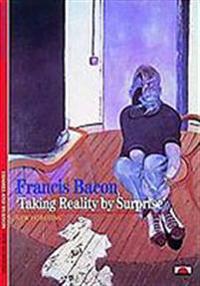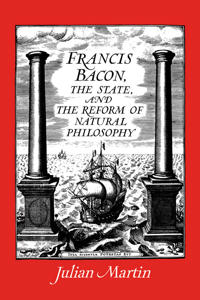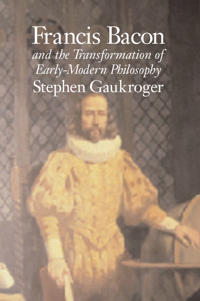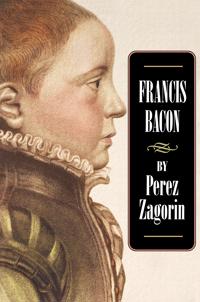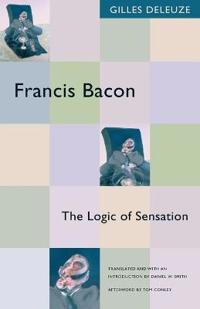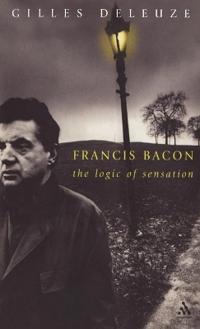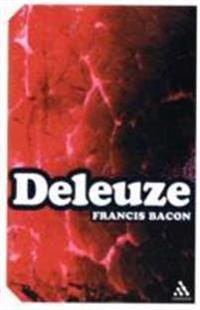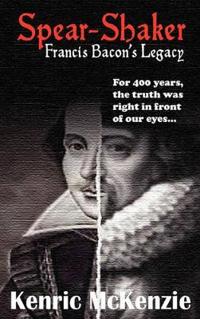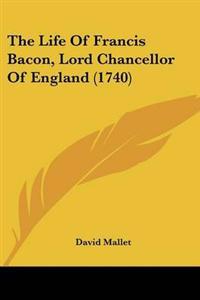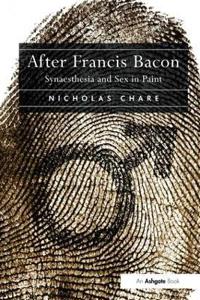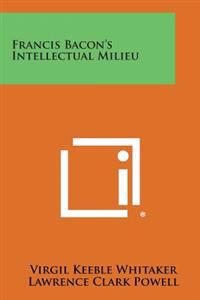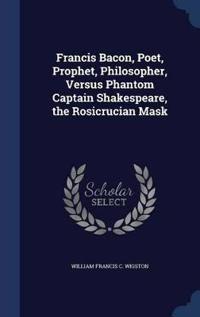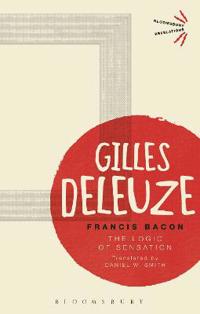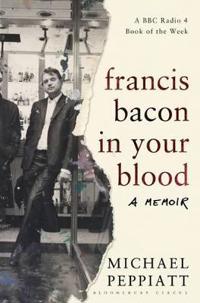Francis Bacon (Häftad)
avChristophe Domino, Ruth Sharman
ISBN: 9780500300763 - UTGIVEN: 199703Bacon's powerful and disturbing images of the human figure have had a profound impact on the art of the 20th century. A lifelong student of colour, form and brushwork, he created an art at once classical and modern, ordered and chaotic, in which human emotions and passions are embedded within the ha[...]
Francis Bacon, the State and the Reform of Natural Philosophy (Pocket)
avJulian Martin
ISBN: 9780521035668 - UTGIVEN: 2007-04Why was it that Francis Bacon, trained for high political office, devoted himself to proposing a celebrated and sweeping reform of the natural sciences? Julian Martin's investigative study looks at Bacon's family context, his employment in Queen Elizabeth's security service and his radical critique [...]
Francis Bacon
ISBN: 9780521109086 - UTGIVEN: 2009-06By modern standards Bacon's writings are striking in their range and diversity, and they are too often considered a separate specialist concerns in isolation from each other. Dr Jardine finds a unifying principle in Bacon's preoccupation with 'method', the evaluation and organisation of information [...]
Francis Bacon's Science Of Magic (Inbunden)
avSophie Weeks
ISBN: 9780521195546 - UTGIVEN: 2013-07-01Francis Bacon and the Transformation of Early-Modern Philosophy (Häftad)
avStephen Gaukroger
ISBN: 9780521805360 - UTGIVEN: 2001-03This ambitious and important 2001 book provides a truly general account of Francis Bacon as a philosopher. It describes how Bacon transformed the values that had underpinned philosophical culture since antiquity by rejecting the traditional idea of a philosopher as someone engaged in contemplation o[...]
Francis Bacon (Häftad)
avPerez Zagorin
ISBN: 9780691009667 - UTGIVEN: 199911Francis Bacon (1561 - 1626), commonly regarded as one of the founders of the Scientific Revolution, exerted a powerful influence on the intellectual development of the modern world. He also led a remarkably varied and dramatic life as a philosopher, writer, lawyer, courtier, and statesman. Although [...]
Francis Bacon (Inbunden)
avMartin Hammer
ISBN: 9780714861333 - UTGIVEN: 2013-03The art of Francis Bacon (1909 - 1992) epitomizes the angst at the heart of the modern human condition. His dramatic images of screaming figures and distorted anatomies seem to embody the darkness and despair that humanity felt in the wake of World War II. Yet they are also painted with a richly ges[...]
The Religious Foundations of Francis Bacon's Thought
ISBN: 9780826216090 - UTGIVEN: 2005-11In this important study, Stephen A McKnight investigates the relation of Francis Bacon's religious views to his "instauration," or program for reforming and advancing learning in order to bring "relief to man's estate." McKnight provides close textual analyses of eight of Bacon's texts in order to e[...]
Francis Bacon: The Logic of Sensation (Inbunden)
avGilles Deleuze
ISBN: 9780826466471 - UTGIVEN: 200306Gilles Deleuze was one of the most influential and revolutionary philosophers of the twentieth century. Francis Bacon: The Logic of Sensation is his long-awaited work on Bacon, widely regarded as one of the most radical painters of the twentieth century.The book presents a deep engagement with Bacon[...]
Francis Bacon (Häftad)
avGilles Deleuze
ISBN: 9780826479303 - UTGIVEN: 200503Francis Bacon is Deleuze's long-awaited work on Bacon, widely regarded as the one of the most radical painters of the twentieth century. The book presents a deep engagement with Bacon's work and the nature of art. Deleuze analyses the distinctive innovations that came to mark Bacon's style while int[...]
Francis Bacon (Inbunden)
avMatthew Gale, Chris Stephens, Martin Harrison
ISBN: 9780847832750 - UTGIVEN: 2009-05Francis Bacon
ISBN: 9780956927316 - UTGIVEN: 2016-06Editor Martin Harrison, following his appointment by the Estate of Francis Bacon, has devoted over a decade to the creation of this magnificent publication, the first-ever complete catalogue raisonne of the work of the great British painter. Including many previously unpublished paintings, this five[...]
After Francis Bacon
ISBN: 9781138271203 - UTGIVEN: 2016-11Like an analyst listening to a patient, this study attends not just to what is said in David Sylvester's interviews with Francis Bacon, but also crucially to what is left unspoken, to revealing interruptions and caesuras. Through interpreting these silences, After Francis Bacon breaks with stereotyp[...]
Francis Bacon's Intellectual Milieu (Häftad)
avVirgil Keeble Whitaker, Lawrence Clark Powell
ISBN: 9781258655075 - UTGIVEN: 2013-04Francis Bacon, Poet, Prophet, Philosopher, Versus Phantom Captain Shakespeare, the Rosicrucian Mask
ISBN: 9781297895203 - UTGIVEN: 2015-08Francis bacon - the logic of sensation (häftad)
ISBN: 9781350040823 - UTGIVEN: 2017-10In this landmark text by one of the most influential philosophers of the twentieth century, Gilles Deleuze takes the paintings of Francis Bacon as his object of his study. The book presents a deep engagement with Bacon's work and the nature of art. Deleuze analyzes the distinctive innovations that c[...]
Francis Bacon in Your Blood
ISBN: 9781408856246 - UTGIVEN: 2015-08It is a story I have been wanting to write for a long time, telling it as it really was before that whole world that I shared with Francis vanishes...Michael Peppiatt met Francis Bacon in June 1963 in Soho's French House to request an interview for a student magazine he was editing. Bacon invited hi[...]
Francis Bacon in Your Blood
ISBN: 9781408856307 - UTGIVEN: 2017-01In June of 1963, when Michael Peppiatt first met Francis Bacon, the former was a college boy at Cambridge, the latter already a famous painter, more than thirty years his senior. And yet, Peppiatt was welcomed into the volatile artist's world; Bacon, considered by many to be "mad, bad, and dangerous[...]
After Francis Bacon: Synaesthesia and Sex in Paint (Inbunden)
avNicholas Chare
ISBN: 9781409411703 - UTGIVEN: 2012-07-28

